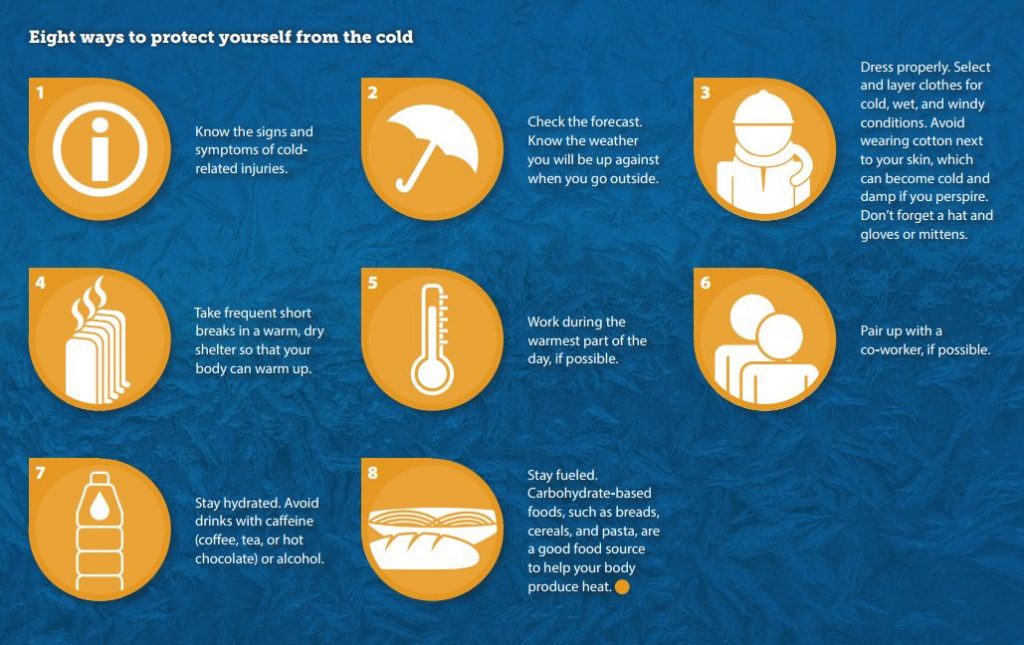In its December 2017 newsletter, Oregon Occupational Safety and Health offers some tips to help you prepare your team for working in cold winter weather and to help them avoid cold stress. Hypothermia, frostbite and trench foot are the most common types of cold stress.
- “Wind chill” is the term used to describe the rate of heat loss from the human body, resulting from the combined effect of low air temperature and wind speed.
- The wind chill temperature is a single value that takes both air temperature and wind speed into account. For example, when the air temperature is 40 degrees Fahrenheit, and the wind speed is 35 mph, the wind chill temperature is 28 degrees F. This measurement is the actual effect of the environmental cold on exposed skin.
- Shivering reaches a maximum when the core temperature falls to 95 degrees Fahrenheit. Without another heat source to warm the body, hypothermia is possible.

For more information and resources, go to the Oregon OSHA website. Stay safe!

